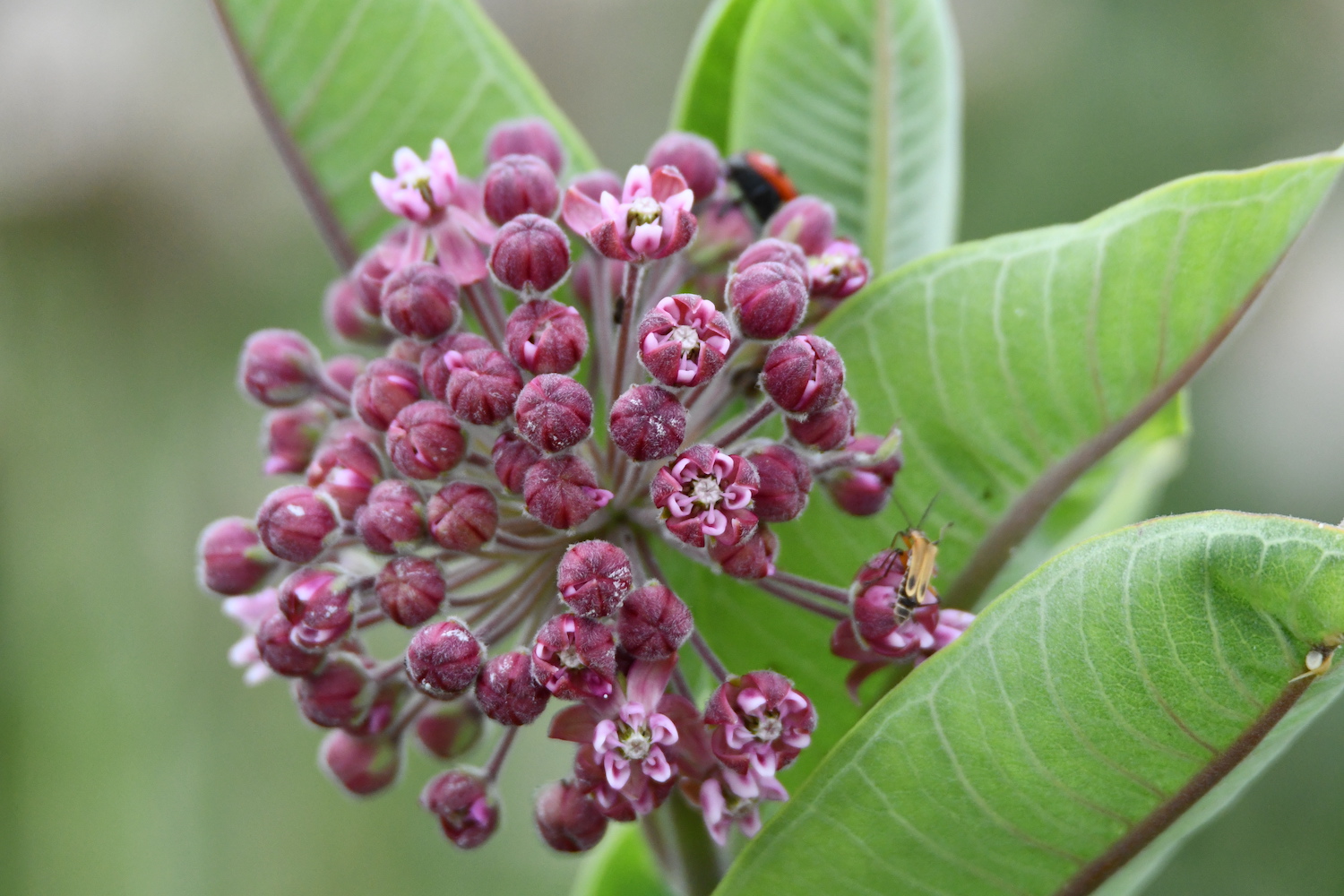When a weed is something more: Milkweed vital for many species

When is a weed something more? When it's essential for the survival of other species, which is the case for milkweed plants. We didn't do milkweed any favors by putting the word "weed" right there in its common name, because this essential plant isn't a weed at all. Monarchs wouldn't exist without milkweed, but they are far from the only creature that benefits from milkweed's very existence.
Milkweed is the host plant for monarchs, reports the Xerces Society for Invertebrate Conservation. Monarchs need milkweed because it's the only thing the caterpillars eat and it's the only plant on which the butterflies will lay their eggs. And although milkweed is vital to monarchs — required for their very existence — they are far from the only animals species that use milkweed. Milkweed bugs and red milkweed beetles both need milkweed plants — milkweed beetles lay their eggs on milkweed, and milkweed bugs eat the seeds of milkweed plants. Deer and rabbits will also eat milkweed leaves, and other moths and butterflies, including tussock moths, use milkweed for their life cycle as well.
And the nectar in the flowers is a big draw too. Many insects, including various bee, beetle, butterfly, fly and wasp species, will visit milkweed to sip the nectar, as will hummingbirds, the San Diego Zoo reports. It can be a good plant around your yard because many of the insects that are attracted to milkweed are predators of pests and destructive species like aphids, mealybugs, slugs and whiteflies. Having milkweed around can help limit the damage caused by these destructive species.
Milkweed plants contain chemical compounds called cardiac glycosides that are toxic to most birds and mammals, and monarchs use this to their advantage. Monarch caterpillars feed only on milkweed, and as they do those toxic chemicals build up in their body, causing no harm to them, according to the Illinois Department of Natural Resources. These chemicals remain in their bodies after they transform into butterflies as well, and most potential predators have learned not to eat monarchs — the caterpillars or the butterflies — because they can make them sick.
Milkweed isn't just a single plant; it's a group of plants in the Asclepiadaceae family of plants. More than 70 native milkweed species grow across the United States, and 24 species grow in Illinois, according to the Illinois Department of Natural Resources.
Five milkweed species in Illinois are state endangered: climbing milkweed, Mead's milkweed, narrow-leaved milkweed, oval milkweed and woolly milkweed. Among the milkweed species you might find growing in Will County preserves and beyond are common milkweed, butterfly weed, swamp milkweed, Mead's milkweed and whorled milkweed.
There is quite a bit of variation among native milkweed species, including habitat, plant size and bloom color. Milkweed flowers can be pink, purple, red, orange, white, green and more, IDNR reports. Some species, like common milkweed, grow in prairies and other open areas, while swamp milkweed prefers marshes and other moist habitats.
Monarchs can use any milkweed species, but among their preferred species are swamp milkweed, butterfly weed, common milkweed, prairie milkweed and whorled milkweed, according to the University of Illinois Extension.
Milkweed is named for the milky sap contained in the plants' stems. Cut or break a stem off a milkweed plant, and you'll see this white liquid flow out. Milkweed plants also produce pods where the seeds are located. Each pollinated flower will produce one or two seed pods that will dry out as they mature in late summer or early fall. The seed pods are full of seeds and fluffy, stringy material called floss. Once fully mature, the floss expands, causing the pods to burst open, the Xerces Society reports. The seeds can then be spread in the wind.
You can use the seeds from the seed pods to plant milkweed in your own yard. However, remember that seeds cannot be collected from forest preserves. When planting milkweed at home, look for native species that are suitable for your growing area. Species like swamp milkweed will grow well in wetter soils, while butterfly weed does well in drier, sandier soils, IDNR reports.
One milkweed species that is not recommended for planting in Illinois and elsewhere in the United States is tropical milkweed. This species is bright and colorful, making it a popular choice for gardeners who find it at plant nurseries and garden centers. However, tropical milkweed is not native to the United States, and research has shown that planting it here may cause monarchs to lay beyond the range of their typical breeding season, which can have negative consequences on their migration, the Xerces Society reports.
